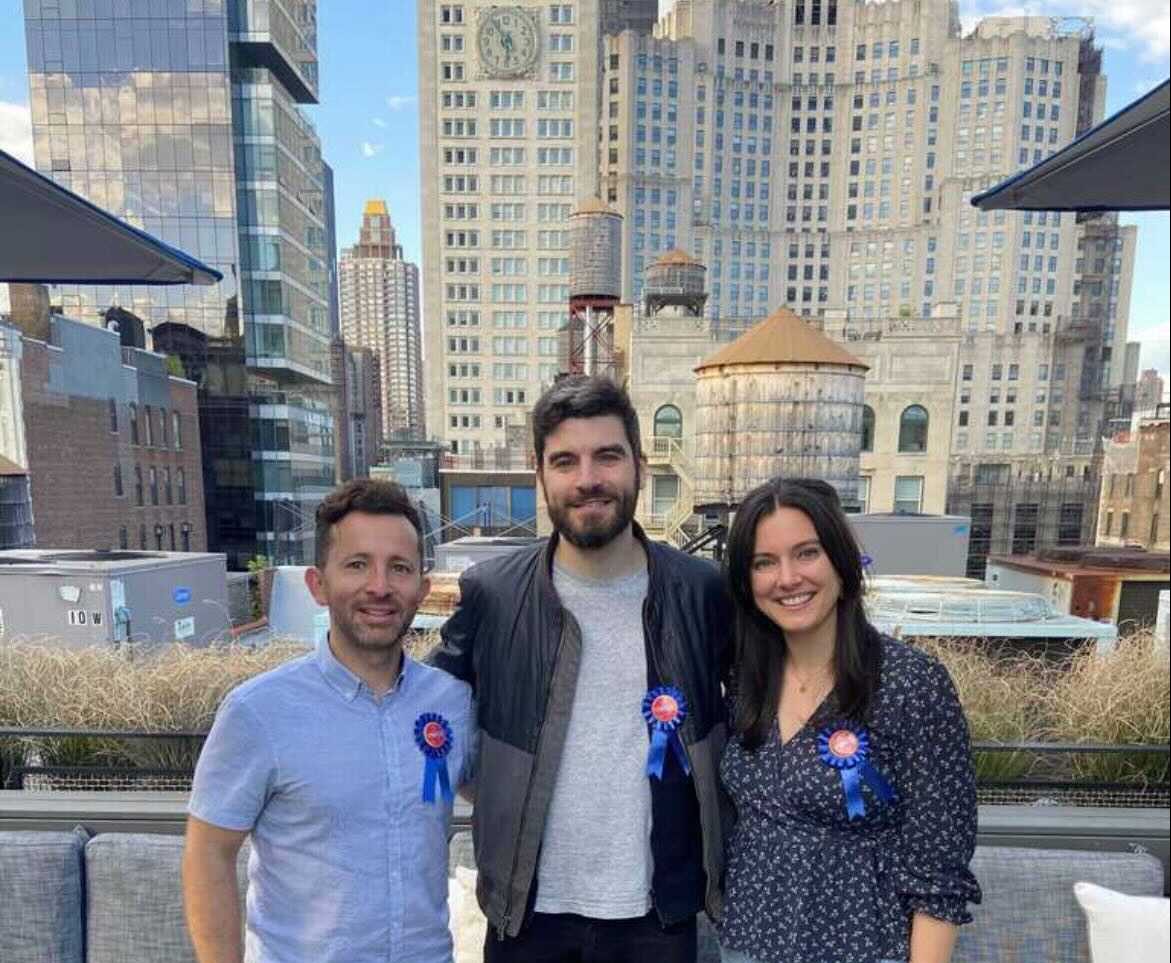Meet the WeWork R-Hub team: co-winners in the Culture and Community category.

Abigail Martone-Richards, Director, Product Compliance
Carlos Gil, Pod Design Manager
Sylvain Blanchard, Senior MEP Engineer Lead
Check out their submission:
This is a theoretical project envisioned by the team.
What is the next frontier when it comes to community and workspace? Rural areas in the US have long been underserved in terms of investment, infrastructure and economic opportunities. But life after the COVID-19 pandemic will look different – and communities in suburban and rural areas may be unrecognizable. Data shows that over 16 million people moved during the first year of the pandemic, with suburban and rural communities absorbing much of the population shift. That trend is likely to continue well into the future, as the changing workplace will allow many people to work remotely and the desire to be in a more bucolic setting have many urban dwellers rethinking their living arrangements.
R-Hub is a rural ecosystem, designed to seize the opportunities brought by shifting demographics around the country. Utilizing existing spaces or implementing a cost-effective modular infrastructure, the goal is to provide a space for community members to work, buy/sell goods and services, participate in a wide range of activities and create a path back to the natural world.
The main component of the R-Hub’s infrastructure is the R-Pod. An R-Pod module provides comfort with a smaller ecological footprint, reduced costs in transportation and most of all, true flexibility. The R-Pod includes 2 models (compact and large). The compact model is 144 sq.ft. and the large model 288 sq.ft. of internal space. Each R-Pod is designed to be used for specific purposes including office, conference room, retail, yoga studio, restroom, information center, cafeteria, lab, etc. Two of the exterior facades include interchangeable panels to customize each individual needs. These two facades are intended to be open to provide natural air circulation and maximized indoor sunlight.
The users of the R-Hub are not just limited to the local community. While locals will be the primary participants in the ecosystem, both as vendors/retailers/workers and customers, with access to large metro areas, temporary users from urban areas will use the R-Hub as an escape from city life. Every R-Hub will have a Point-of-Entry – something to draw people in, regardless of membership status. The POE is meant to allow a transient experience while more concrete components of the ecosystem, like coworking and retail, will ensure a lively presence around the clock. The revenue model for the R-Hub Ecosystem is primarily based on membership levels for both short and long-term users.
R-Pods can be rented for a variety of use cases, all with flexible lease agreements. After considering the capital costs and operational expenditure of the R-Hub ecosystem, the revenue projections are profitable, making the R-Hub a worthwhile investment – both in capital and in community. In a post-COVID world where nothing will be as it was, R-Hub is a place where users will work, play and come together. This ecosystem will energize rural communities and draw participants from far and wide.
Click on an image to see it full size.
To celebrate their win, we connected with the team to see how their idea evolved since it was submitted.
“The main thing that has evolved has been exploring implementation strategies for R-Hub. As a product meant to be self-sufficient, identifying ways to construct and install pods quickly that have the right comfort levels (lighting, MEP, etc) is key. We believe that this is a product with real-world viability and we’ve seen similar ideas implemented on a small scale. Many companies are exploring office solutions in suburban and rural areas, as well as mobile workspace concepts. The trick will be to do it at cost with the ability to scale.
We continue to research and monitor trends that suggest workplace solutions in suburban and rural areas will be desirable in the long run. As flex and hybrid work models become the norm, data does indicate that, while many urban areas will see revitalization, a significant percentage of individuals who relocated out of cities will not return. We feel that in addition to providing a desirable workplace solution, the R-Hub ecosystem will also bring revitalization to rural areas that desperately need it.”
Comments from the Jury:
I can definitely see this being implemented in an urban or exurban situation. And I see it as a magnet to bring the community together.
This type of community reminded me, almost like how food trucks are; they can create the sense of community in certain cities. And in this case rhub can really create a buzz and the open Pavilion in the middle was a nice little touch in terms of connecting everyone together.
🏆 Did this submission earn your vote? Vote for the People’s Choice award here! 🏆
Voting ends September 24th – one vote per person.
A special thank you to our sponsors:

















